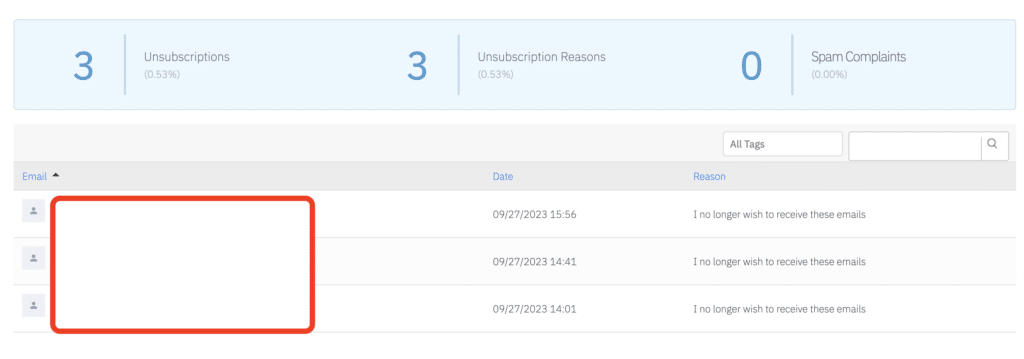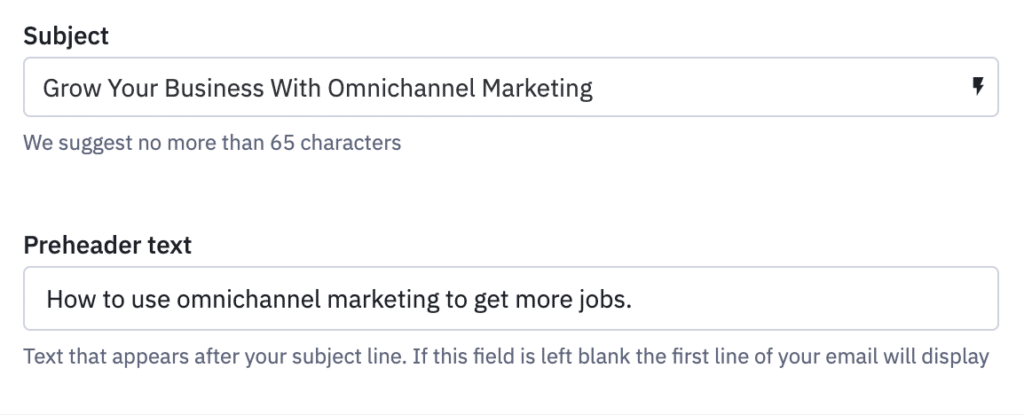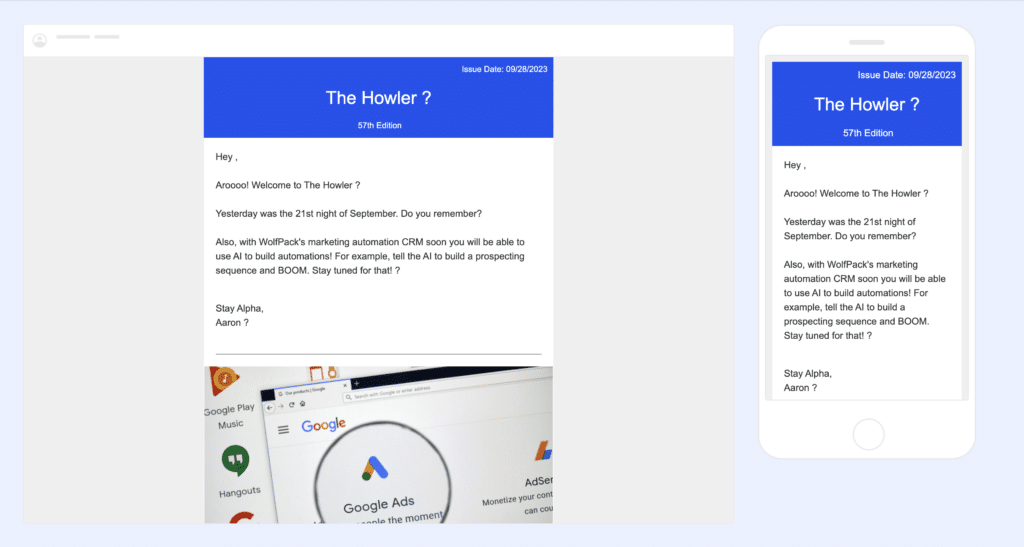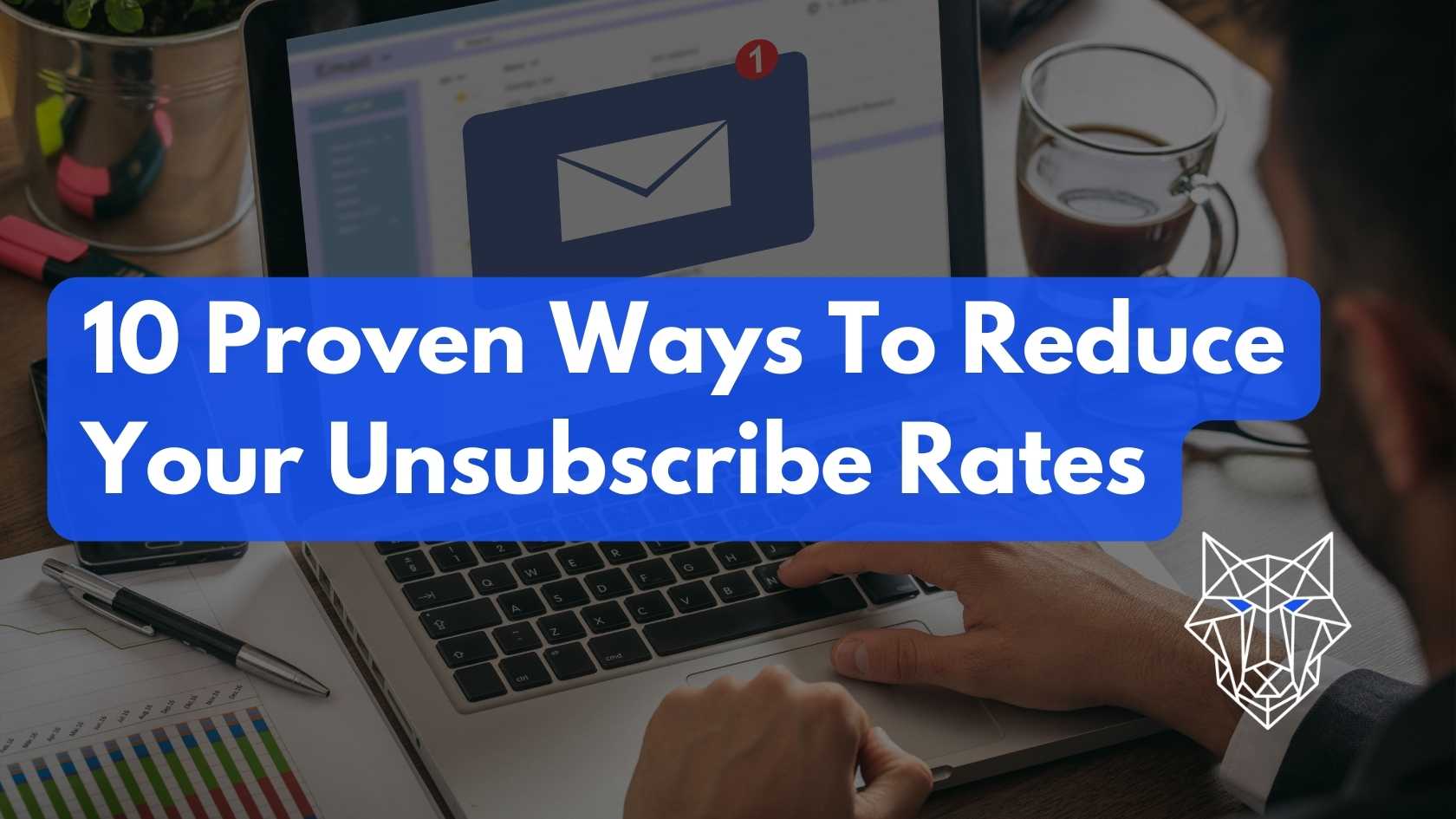Unsubscribe rates can be a nightmare for marketing managers and small business owners. Losing subscribers to your email lists means losing potential customers and leads, making it crucial to find ways to reduce these rates.
In this blog post, we will explore ten proven strategies that can help you minimize your unsubscribe rates and keep your audience engaged.
What Are Unsubscribe Rates & How To Calculate It
Unsubscribe rates in email marketing refer to the percentage of recipients who opt out or discontinue their subscription to an email list after receiving a particular email campaign. This metric is crucial for assessing the effectiveness of your email marketing efforts and gauging the engagement level of your audience.
A low unsubscribe rate indicates that your content and messaging resonate with your subscribers, while a high unsubscribe rate suggests a disconnect or dissatisfaction. What constitutes a “good” unsubscribe rate can vary depending on factors such as industry, audience, and email frequency. However, as a general guideline, an unsubscribe rate below 0.5% is often considered excellent, while anything above 2% may be cause for concern and may necessitate adjustments in your email marketing strategy, such as refining your content or targeting a more relevant audience segment.

To find your unsubscribe rate, just look at the analytics of your email marketing software as almost all email marketing software will tell you how many unsubscribes you had. Ultimately, your unsubscribe rate is just the number of unsubscribes divided by the total number of contacts. So, if you had 1 unsubscribe for an email list of 100 contacts, then your unsubscribe rate would be 0.01 or 1%.
Improving Your Unsubscribe Rate
1. Start With The List Source
One of the biggest causes of a high unsubscribe rate is the email list, to begin with. It is crucial that every contact opts into your email list and is aware you are going to be sending emails. The largest mistake we see as an email marketing agency, is that small businesses just start sending mass emails to every contact in their database.
Even if you have a huge customer list, you cannot just all of a sudden start sending mass emails to them. Instead, you should first ask them to opt into your email list. To do this, use your email marketing software or another form of software to have them check a box that notes they are opting in. Then, your software should automatically add them to that email list.
2. Deliver Relevant Content
Another one of the main reasons people unsubscribe is because they no longer find the content valuable or relevant. Ensure that you consistently deliver high-quality, informative, and engaging content that aligns with your audience’s interests and needs. By doing so, you increase the chances of retaining their attention and preventing them from clicking that dreaded “unsubscribe” button.
Mass emails that take you a second to write, or that are copy and paste content will never work. Instead, take the time to write your email copy and place yourself in the shoes of the reader. Ask yourself, if you were them, would you take the time to read the content? If the answer is no, then you should probably rewrite your email content.
3. Personalize Your Emails
People appreciate personalized experiences. Address your subscribers by their first name and tailor your emails to their specific preferences and behaviors. Use email marketing tools that allow you to segment your audience based on demographics, interests, and past interactions. This way, you can send targeted content that resonates with each individual subscriber, making them feel valued and less likely to unsubscribe.

Ideally, your email list should predominantly consist of individuals who share a common interest in you or your company’s offerings. However, there are instances in business where personalization strategies warrant segmentation based on various facets of your enterprise or distinct customer personas. For instance, you might craft one version of the email to cater to potential non-customers, while another version excludes content aimed at this specific audience segment. This targeted approach ensures that your email campaigns resonate effectively with each subgroup, maximizing engagement and relevance.
4. Optimize Email Frequency
Finding the right balance between staying in touch without overwhelming your subscribers is essential. Bombarding them with too many emails can lead to fatigue and increased chances of opting out. On the other hand, infrequent communication may cause them to forget about your brand. Experiment with different frequencies and monitor engagement metrics to determine the optimal email cadence for your audience.
In general, we recommend frequencies between once a week to once a month. Anything more frequent or less frequent can have less of an impact.
5. Craft Engaging Subject Lines
Your subject lines play a significant role in whether your subscribers open or ignore your emails. Invest time in crafting compelling and attention-grabbing subject lines that create curiosity and provide value. Avoid clickbait tactics or misleading promises as they can erode trust and increase unsubscribe rates over time.

I like sending test emails to myself with the subject lines to see if it truly makes sense, fits well in my email, and is overall something I would click.
6. Improve Email Design and Accessibility
Ensure that your emails are visually appealing and accessible across different devices and email clients. Use responsive design techniques to optimize the layout for mobile users. Simplify the design, use clear and concise language, and include a strong call to action to encourage readers to engage with your content.

Most modern email marketing software should do this for you, but send a view test to yourself so you can view the email on desktop and on mobile just to be sure.
7. Offer Exclusive Benefits
Reward your subscribers for their loyalty by providing exclusive benefits or discounts. Offering special promotions, early access to new products, or insider information creates a sense of exclusivity and encourages subscribers to remain engaged with your brand.
8. Monitor and Act-On Feedback
Pay attention to feedback from your subscribers, such as replies to your emails or survey responses. Use this valuable insight to improve your content, identify pain points, and address any issues that may lead to unsubscribing. Show your audience that you value their opinions and are actively working to meet their needs.
9. Make It Easy to Unsubscribe
While it may seem counterintuitive, making the unsubscribe process simple and hassle-free is crucial. If a subscriber wants to leave your list, forcing them to jump through hoops will only create frustration and potentially damage your brand reputation. Provide an easy-to-find unsubscribe link in every email, ensuring compliance with anti-spam regulations. This way, you show respect for your subscribers’ choices and maintain transparency.
Most modern email marketing software will do this for you, but just be sure to not hide and it and not make your contacts jump through hoops to unsubscribe. Send some tests to yourself to ensure you can easily find it and unsubscribing is hassle-free.
10. Regularly Clean Your Email List
Periodically cleaning your email list will not only improve your deliverability rates but also reduce unsubscribe rates. Remove inactive subscribers, verify email addresses, and address bounces to ensure you’re targeting an active and engaged audience. This proactive approach helps maintain a healthy and engaged subscriber base.

Our email marketing software lets you clean lists by removing unengaged contacts, or contacts that have not opened your emails in 3, 6, or 12 months. See if your software can do the same thing.
Frequently Asked Questions
- What Is A Good Unsubscribe Rate?
- Anything below 1% is generally considered good!
- How To Calculate Unsubscribe Rates?
- Take the number of contacts that have unsubscribed and divide it by the total in your contact list. For example, 1 unsubscribe / 100 contacts = 0.01 or 1% unsubscribe rate.
- What Is The Average Unsubscribe Rate?
- On average, the average unsubscribe rate is between 1% – 2%. However, your goal should be below 1%!
Final Thoughts
In conclusion, reducing unsubscribe rates requires a combination of delivering valuable content, personalizing your emails, optimizing email frequency, and engaging with your audience. By implementing these ten proven strategies, marketing managers and small business owners can create long-lasting relationships with their subscribers and minimize the dreaded loss of potential customers.
Ready to take your email marketing to the next level? Schedule a consultation or get a proposal from WolfPack Advising.





